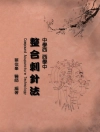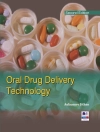It was with great pleasure that I accepted the invitation to write the foreword for Drugs and Poisons in Humans. A Handbook of Practical Analysis. Dr. Osamu Suzuki and Dr. Mikio Yashiki, two outstanding Japanese scientists, f rst published the Handbook in Japanese in 2002. Specialists throughout Japan contributed analytical methods for a wide variety of therapeutic and illicit drugs, pesticides, and natural toxins and alkaloids. In fact, rarely has such a wide spectrum of analytes and metabolites been addressed within a single reference manual. At the beginning of the book, general topics are addressed, including instructions on h- dling biological materials, measurement of drugs in alternative specimens, and guidance on resolving analytical problems that may occur. T ere are discussions of extraction modalities and detection methodologies and how to select these appropriately based on the physioche- cal characteristics of the drug. Analysis of specif c classes of drugs and relevant metabolites are covered in subsequent chapters. Clinical, analytical and forensic toxicology and clinical ch- istry laboratories will f nd the volume informative and useful. Toxicologists are of en faced with developing methods for new drugs and metabolites with little information available in the literature. T is book provides a great starting point for method development providing pro- dures that have been utilized in real life situations. In addition, toxicologists developing new methodologies may use this volume as a guide to selecting the most appropriate instrumen- tion to handle the breadth of their analytical workload.
Spis treści
Chapters of general nature.- How to handle biological specimens.- Alternative specimens.- Pitfalls and cautions in analysis of drugs and poisons.- Pretreatments of human specimens.- Detection methods.- A computer system for diagnosis of causative drugs and poisons developed by the Japan Poison Information Center (Tokyo).- Practical use of the poison-net developed by the Japan Information Network (Hiroshima).- Problems in toxin analysis in emergency medicine.- Analysis of chemical warfare agents and their related compounds.- Chapters on specific toxins.- Carbon monoxide.- Hydrogen sulfide and its metabolite.- Cyanide.- Methanol and formic acid.- Ethanol.- Chloroform and dichloromethane.- Toluene, benzene, xylene and styrene.- Alkyl nitrites.- Components of gasoline and kerosene.- Amphetamines and their metabolites.- Cannabinoids and their metabolites.- Morphine and its analogues.- Cocaine and its metabolites.- Pentazocine.- Lysergic acid diethylamide (LSD).- 3, 4-Methylenedioxyamphetamines.- Phencyclidine.- ?-Hydroxybutyric acid.- Phenothiazines.- Butyrophenones.- Tricyclic and tetracyclic antidepressants.- Benzodiazepines.- Bromisovalum.- Barbiturates.- Diphenylmethane antihistaminics.- Propionic acid derivative analgesic-antipyretics.- Acetaminophen (paracetamol).- Acetylsalicylic acid.- Antiepileptics.- Muscle relaxants.- ?-Blockers.- Local anaesthetics.- Salicylic acid.- ?-Lactam antibiotics.- Hypochlorite.- Benzalkonium chlorides.- Hair dyes.- Permethrin.- Boric acid.- Naphthalene.- p-Dichlorobenzene.- Ethylene glycol.- Aconite toxins.- Mushroom toxins.- Tetrodotoxin.- Methylxanthine derivatives.- Nicotine and cotinine.- Tropane alkaloids.- Oleander toxins.- Simultaneous analysis of pesticides by GC/MS.- Organophosphorus pesticides.- Glufosinate and glyphosate.-Carbamate pesticides.- Paraquat and diquat.- Cresol.- Diazine and triazine herbicides.- Coumarin rodenticides.- Sarin and its decomposition products.- VX and its decomposition products.- Sodium azide.- Arsenic compounds and other inorganic poisons.- Nitrate and nitrite compounds.- Methemoglobin.












